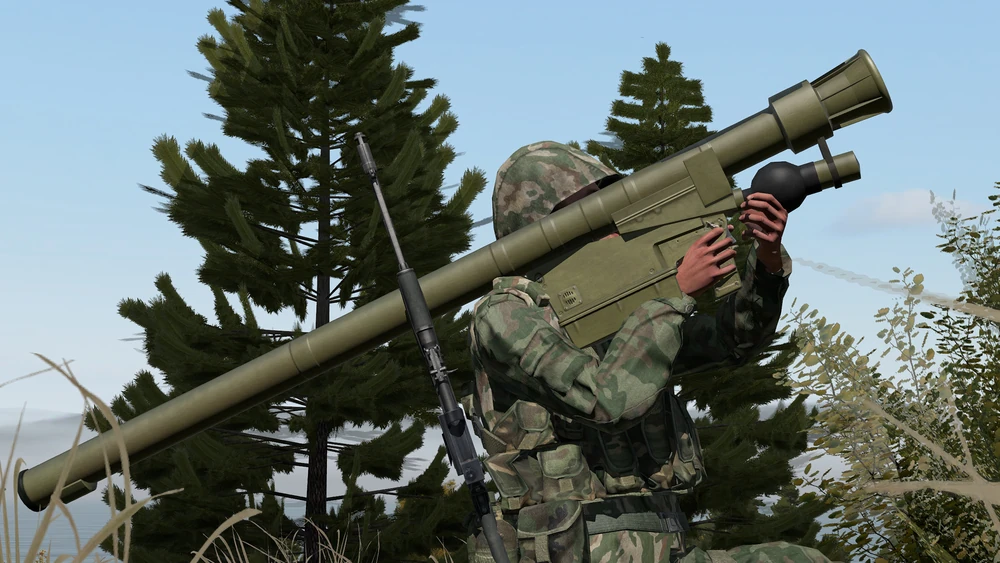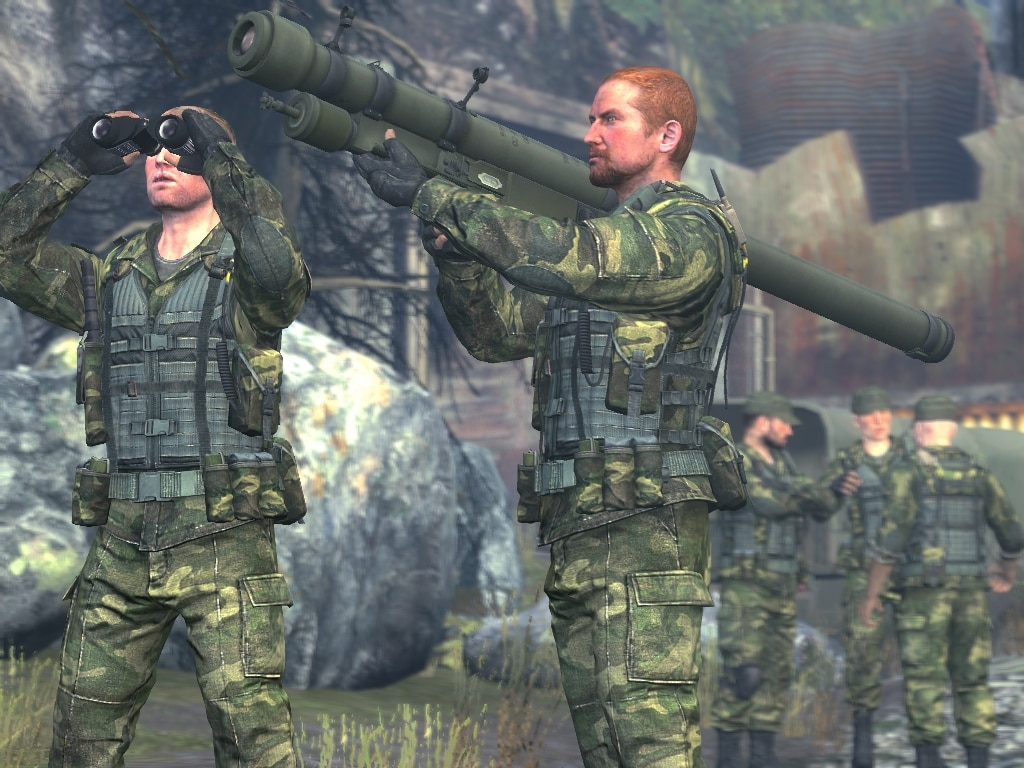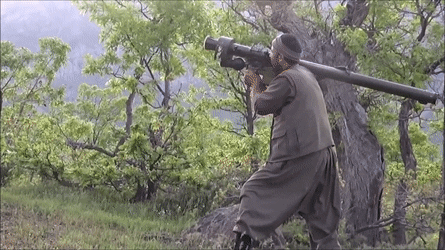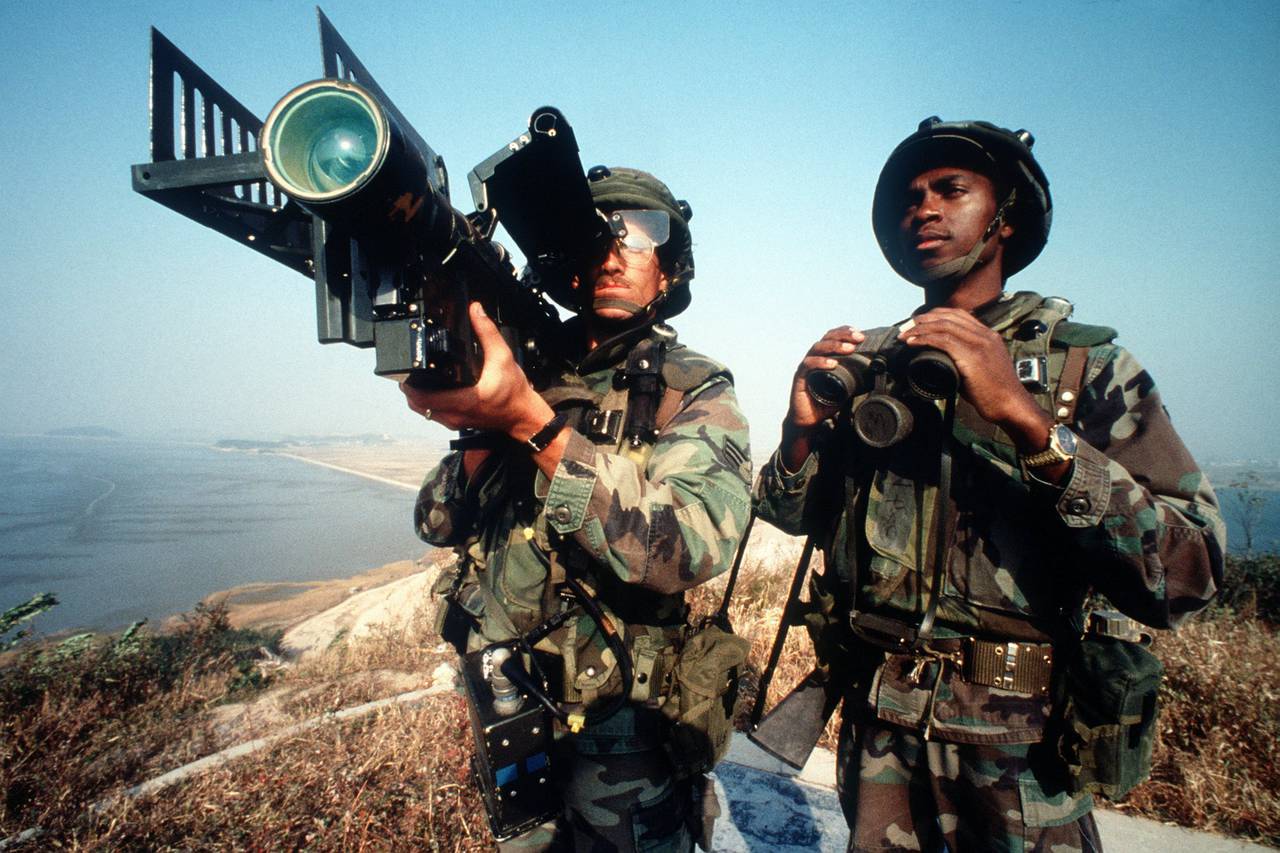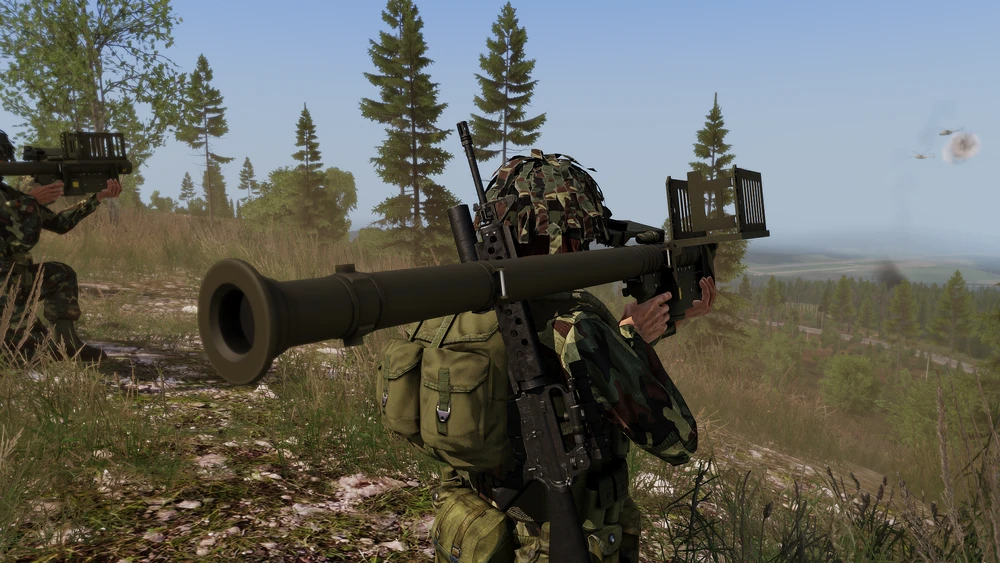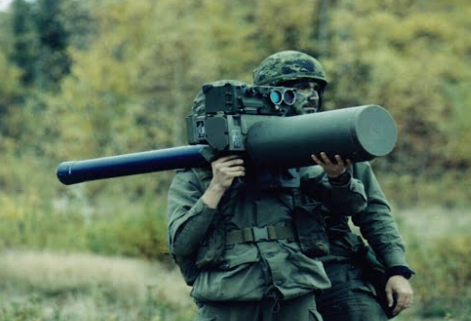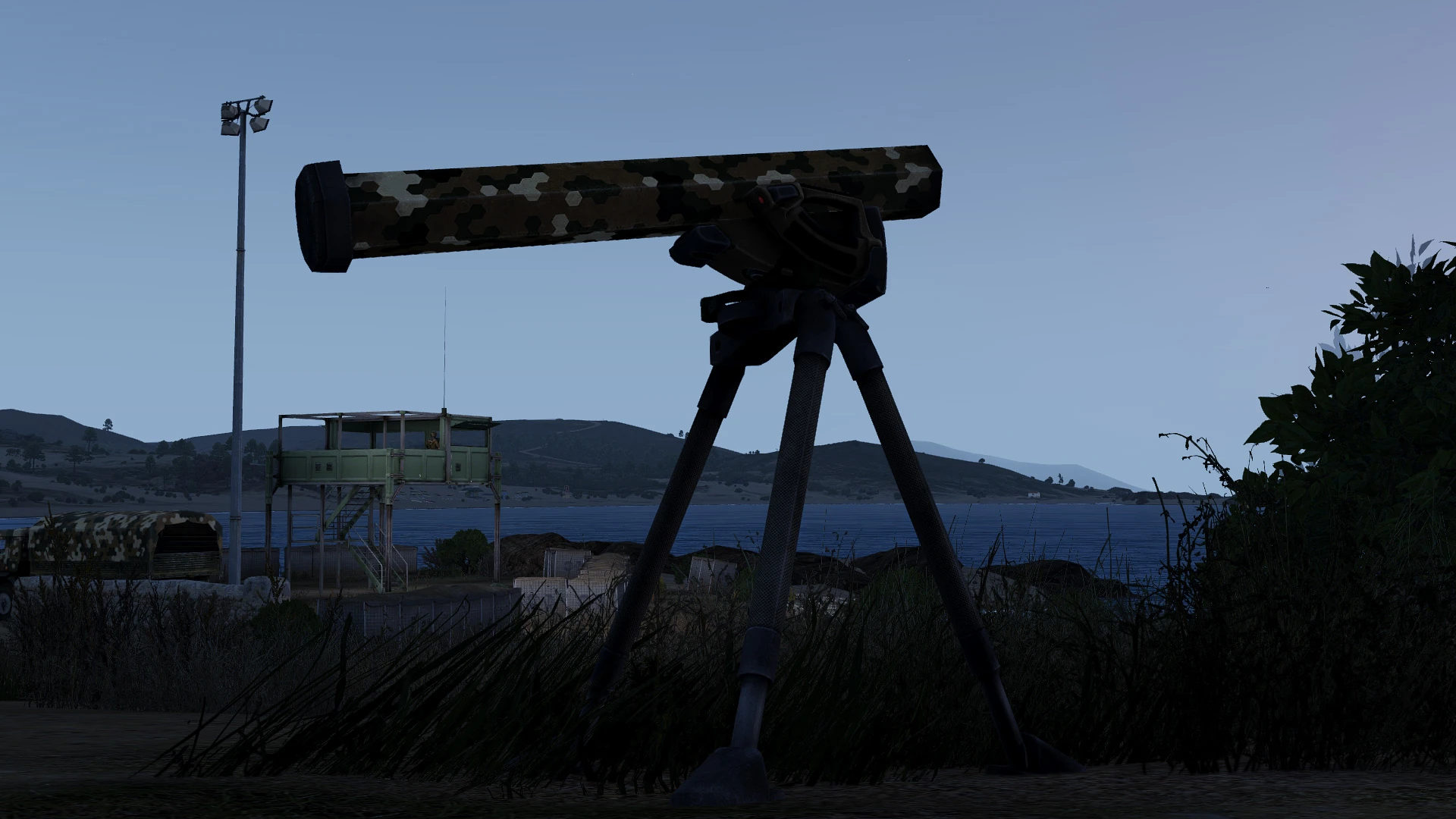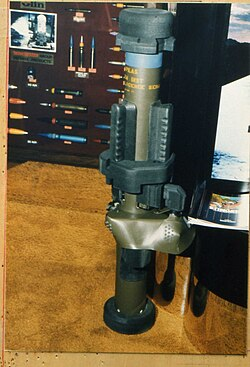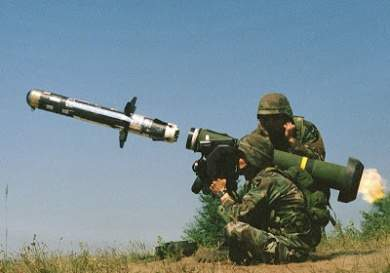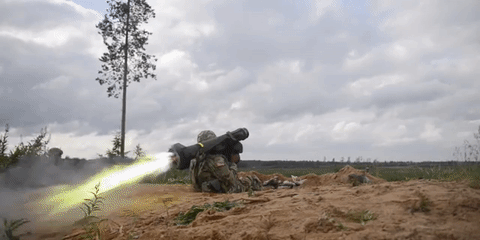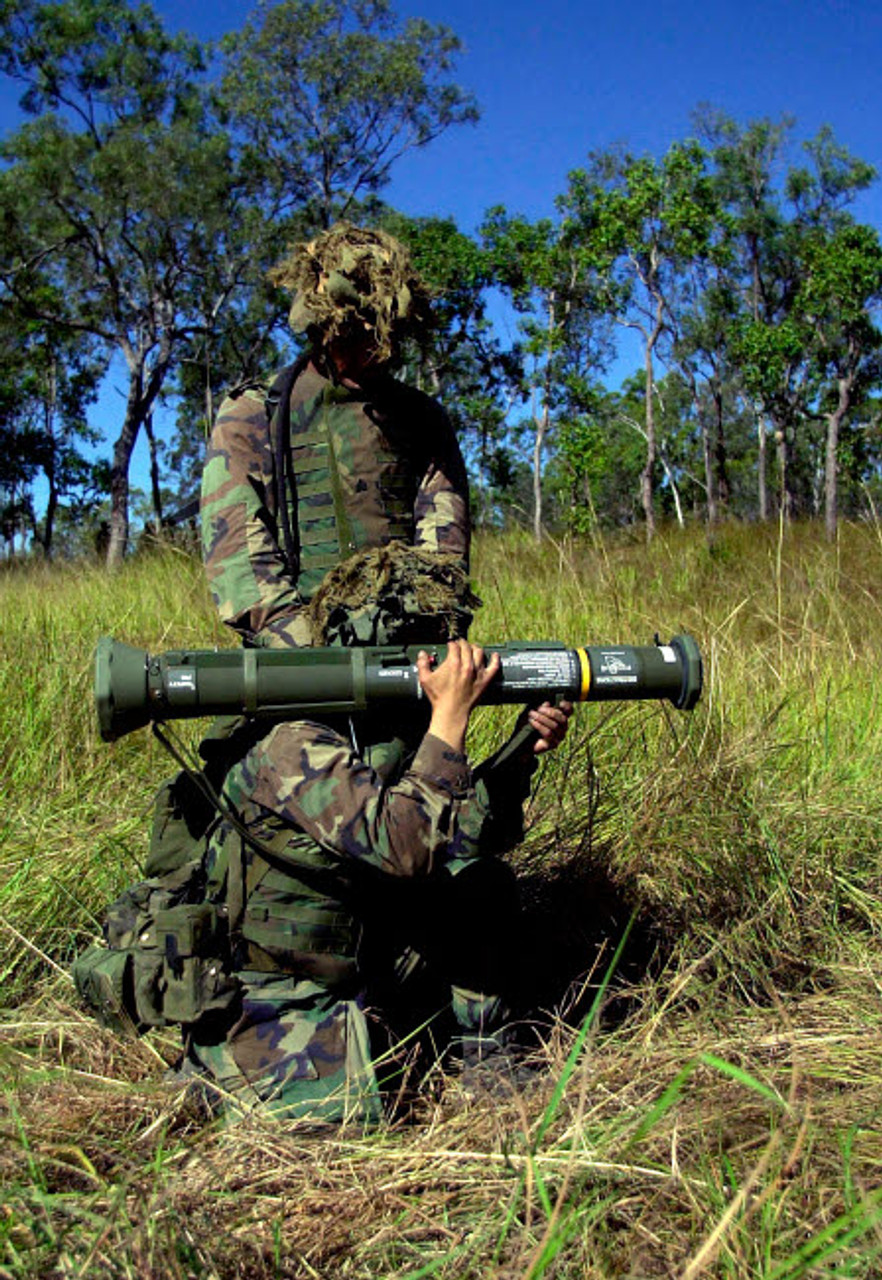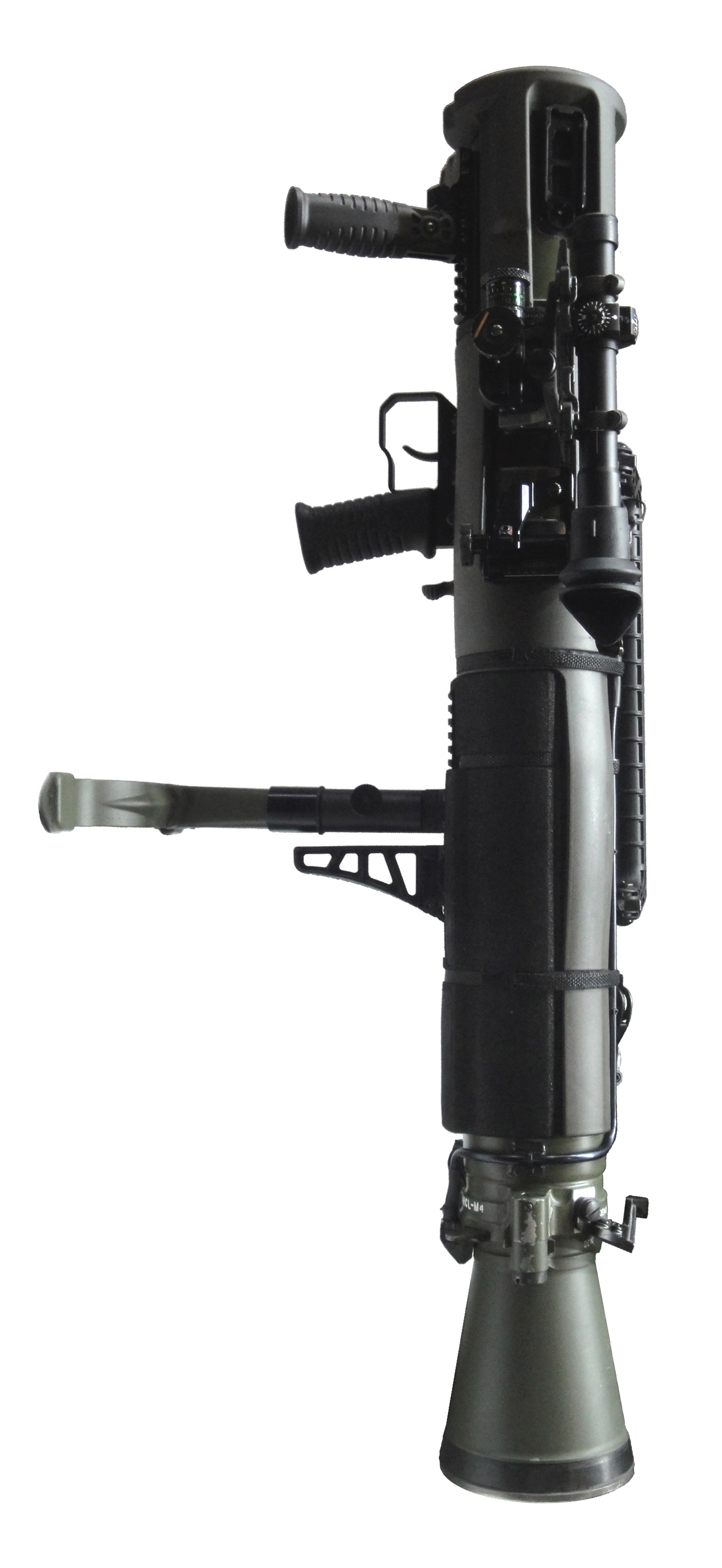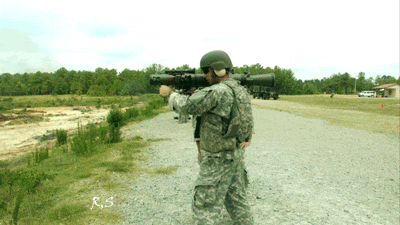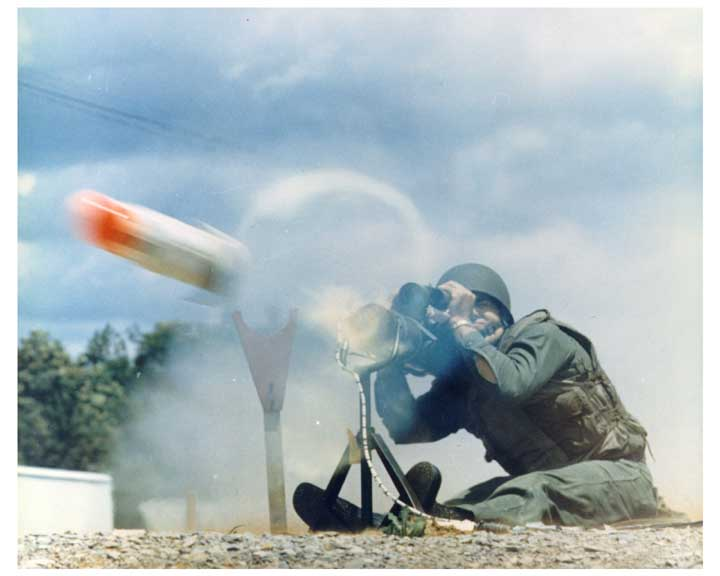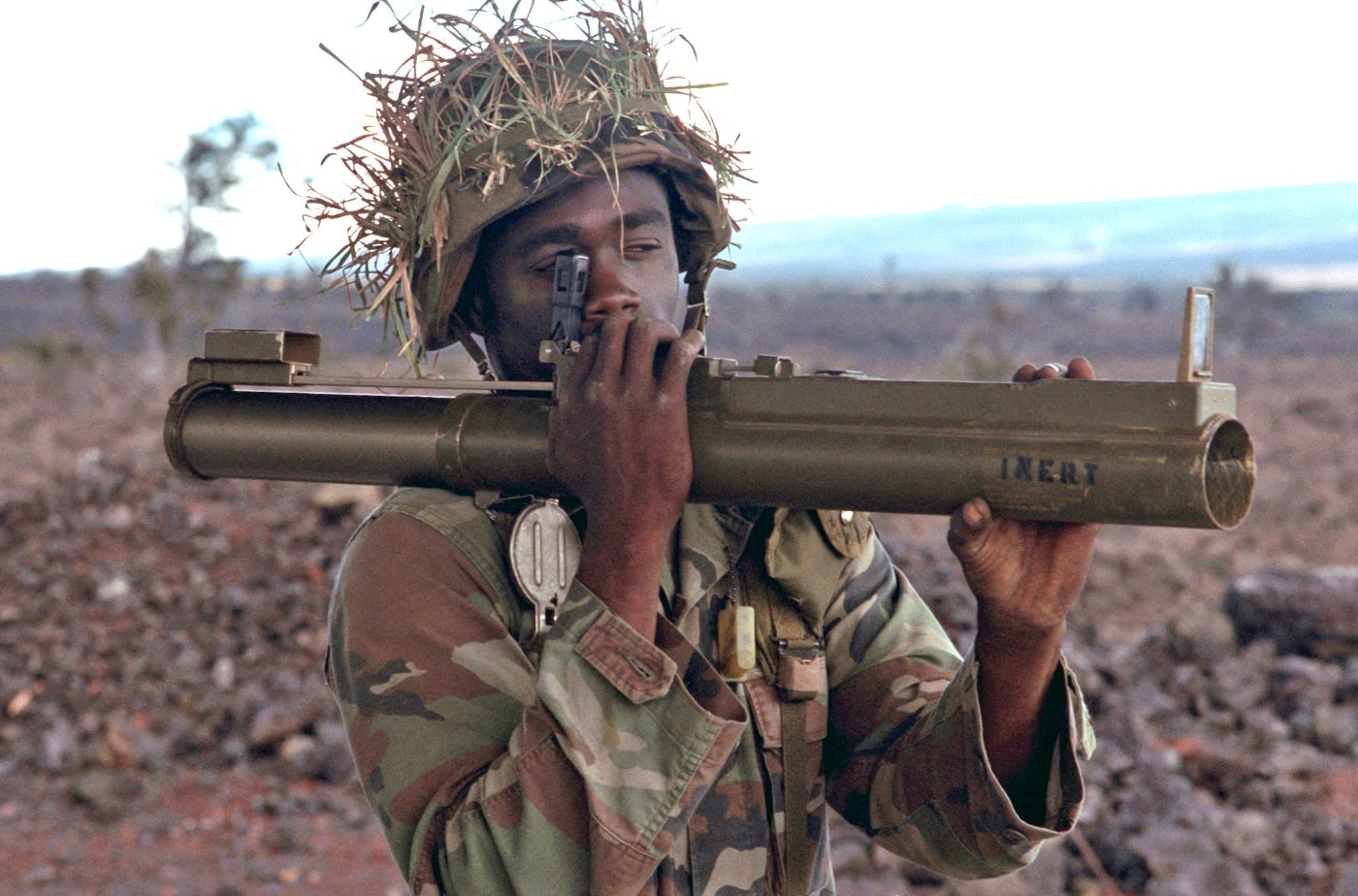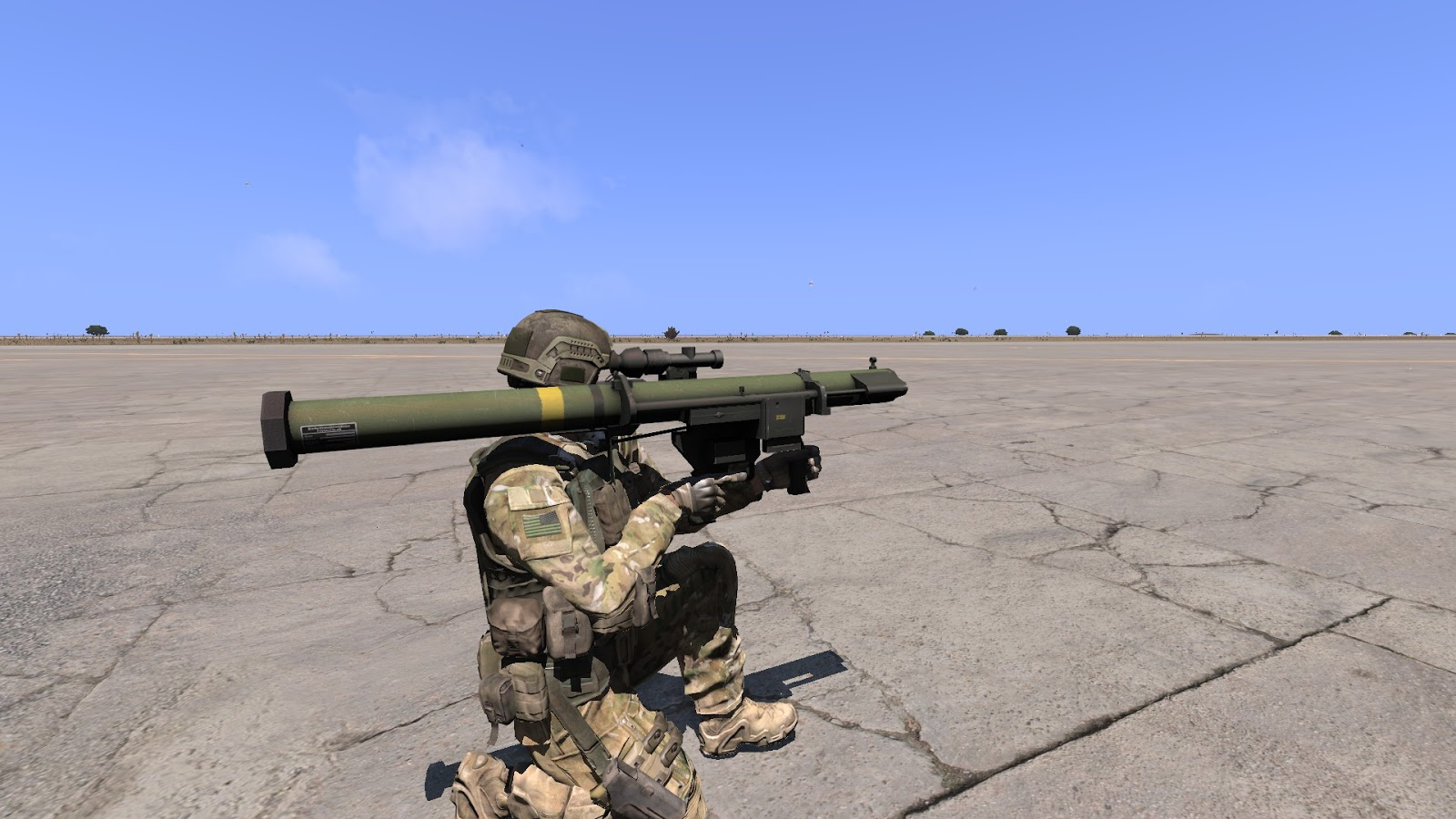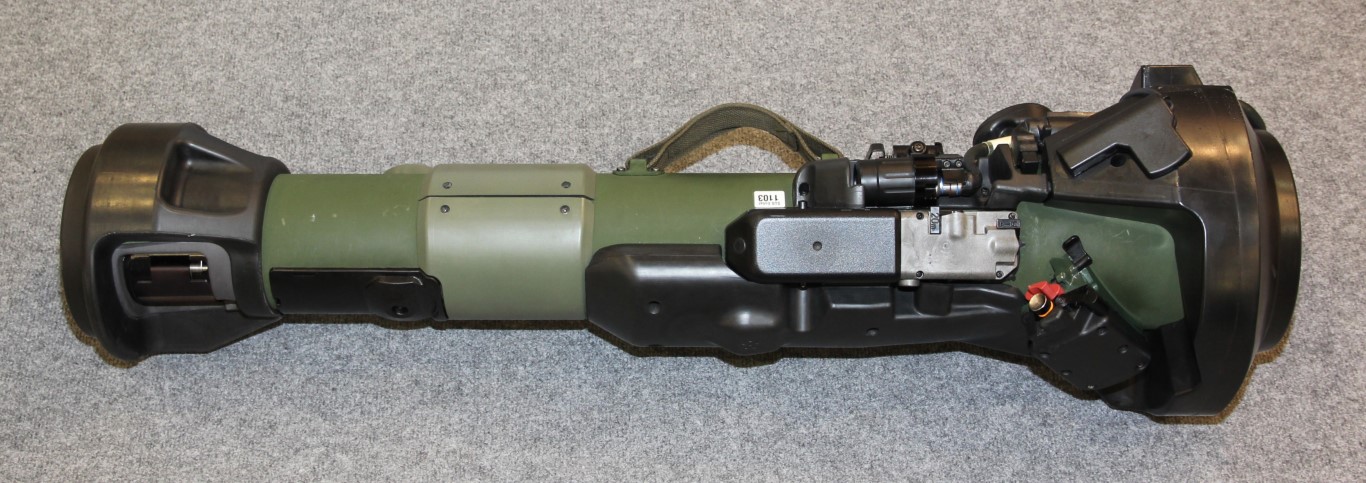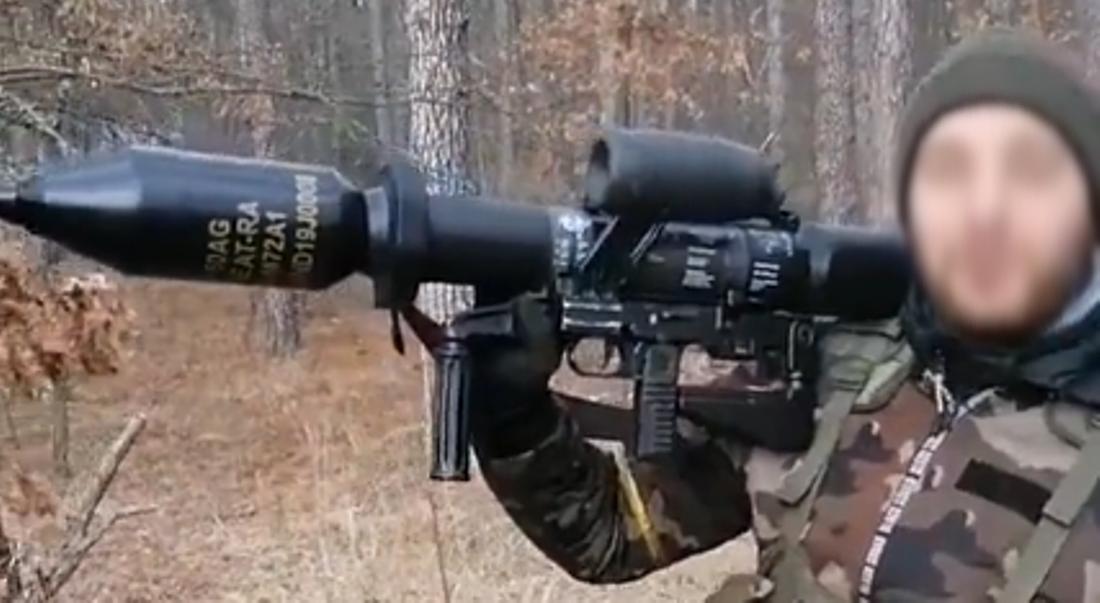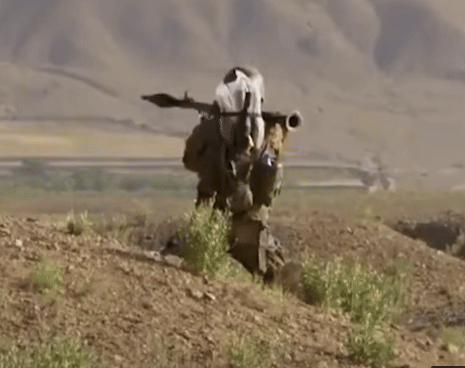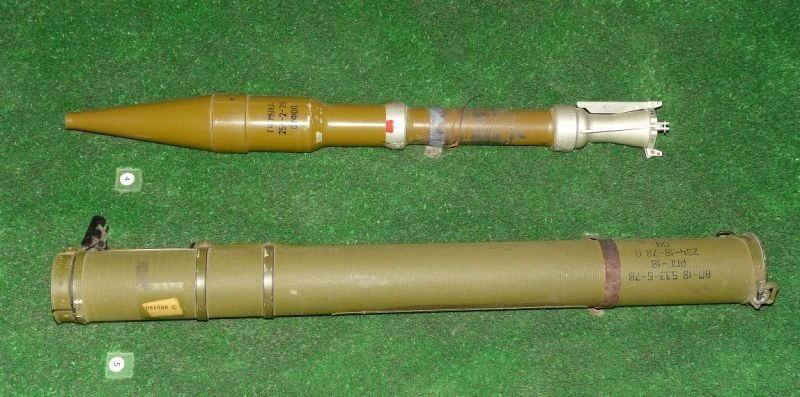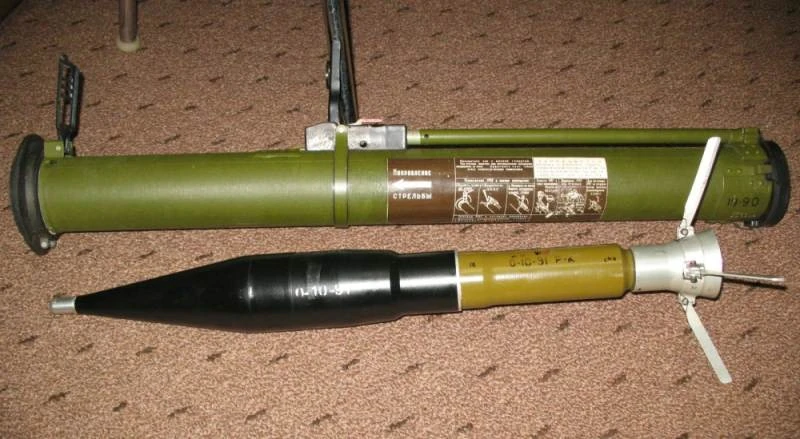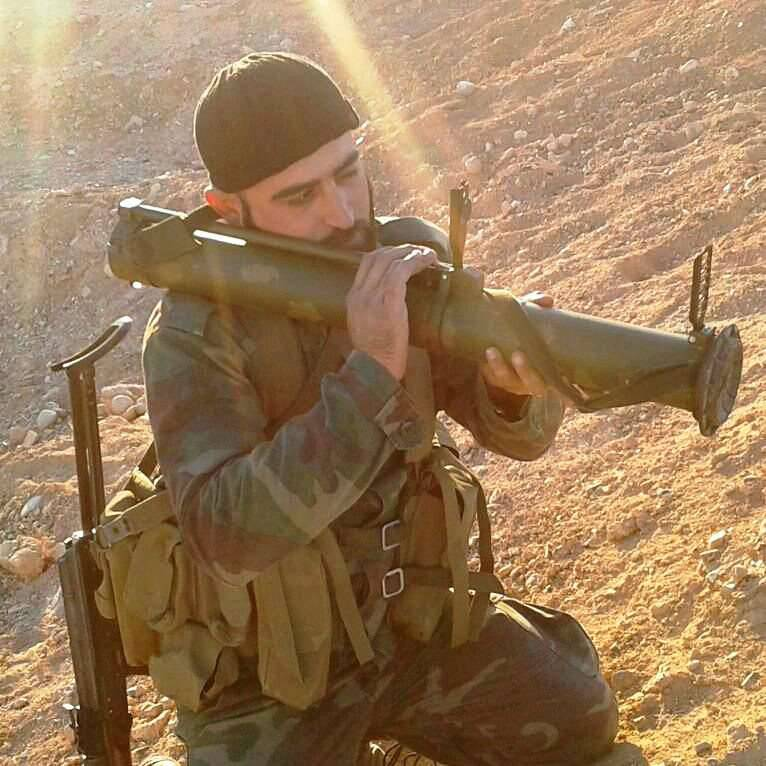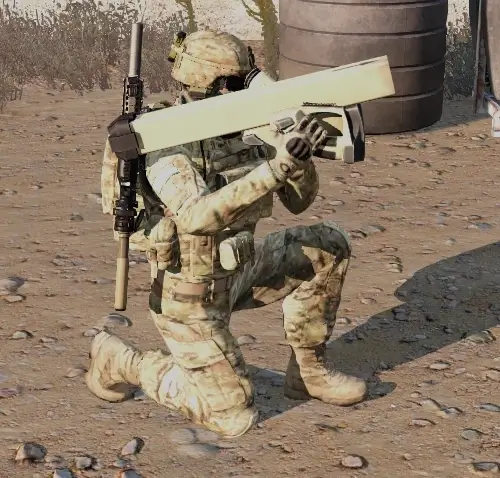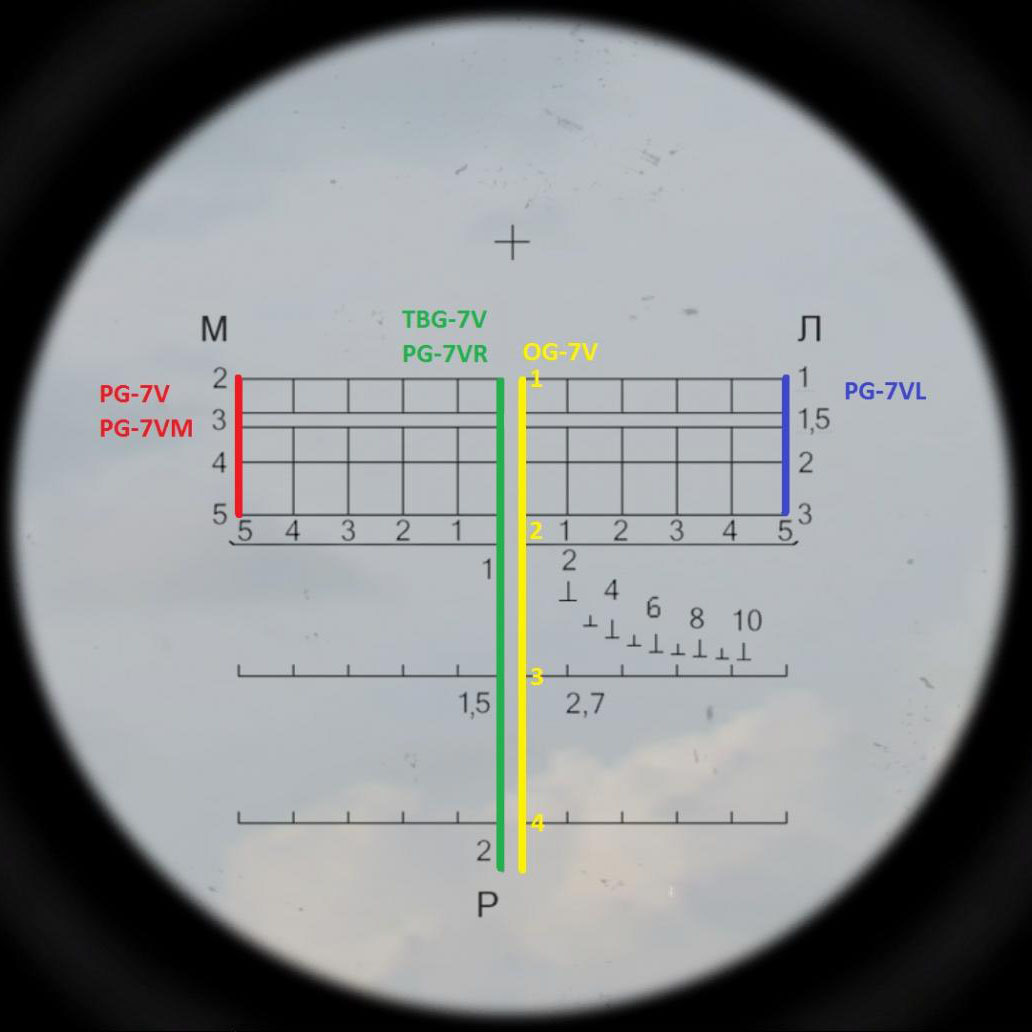Table of Contents
MANPADS and MANPATS Guide
This article is a part of Arma 3 Asset Guides.
MANPATS and MANPADS: Infantry Force Multipliers
Man-Portable Anti-Tank Systems (MANPATS) and Man-Portable Air-Defense Systems (MANPADS) represent critical capabilities for modern infantry and irregular forces. These weapon systems provide individuals or small teams with the ability to engage and destroy high-value targets – armored vehicles and aircraft, respectively – that would otherwise require much heavier or specialized assets. Their portability, relative affordability, and effectiveness have significantly impacted battlefield dynamics.
Man-Portable Anti-Tank Systems (MANPATS)
Definition and Purpose
MANPATS are shoulder-fired or crew-served (but still man-portable) weapon systems designed primarily to defeat tanks and other armored fighting vehicles (AFVs). They range from simple unguided rocket-propelled grenades (like the RPG-7) to sophisticated guided missiles with advanced seekers and warheads (like the Javelin or Spike). Their core purpose is to give infantry units organic anti-armor capability for both offensive and defensive operations.
Doctrine & General Principles of Use
- Point Defense: Protecting key positions, command posts, or chokepoints from enemy armored assault. MANPATS teams integrate into the overall defensive plan.
- Overwatch: Providing anti-tank cover for advancing friendly forces or during withdrawals, engaging enemy armor that threatens the supported unit.
- Maneuver Support: Accompanying infantry formations to immediately address armored threats encountered during movement or assault.
- Area Denial: Deploying multiple MANPATS teams to make specific areas prohibitively dangerous for enemy armor to enter.
- Asymmetric Warfare: Used extensively by non-state actors and lighter forces to counter the technological advantages of conventional mechanized armies.
Tips for MANPATS Operators
- Know Your Weapon: Understand its maximum effective range, minimum arming distance, flight time, guidance type (e.g., fire-and-forget, MCLOS, SACLOS), and backblast danger area.
- Target Selection & Prioritization: Identify the most dangerous threat or highest value target first. This could be the closest vehicle, a command tank, or a specific type known to be particularly dangerous.
- Aiming Point:
- Sides/Rear: Target the hull side, turret side, or rear aspect. These areas typically have significantly less armor than the front. Aim for center mass or specific weak points like engine compartments.
- Top Attack (if applicable): Systems like the FGM-148 Javelin attack the top armor, which is usually the thinnest. Ensure clear overhead trajectory.
- Mobility Kills: Targeting tracks, suspension, or drive sprockets can immobilize a vehicle, making it vulnerable to follow-up attacks or other threats.
- Optics/Sensors: Damaging sights and sensors can significantly degrade the vehicle's fighting ability.
- Avoid Frontal Glacis: The thickest armor is usually on the front hull and turret face. Avoid engaging head-on unless absolutely necessary or using a weapon specifically designed to defeat it.
- Positioning is Key:
- Cover and Concealment: Use terrain, buildings, vegetation, or prepared positions to hide from enemy observation before, during, and after firing.
- Flank/Rear Shots: Whenever possible, maneuver to engage the target's weaker aspects.
- Elevation: Firing from elevated positions (buildings, hills) can provide better angles on top armor and improve observation but can also make you more visible.
- Escape Route: Always plan an escape route before engaging.
- Backblast Awareness: Ensure the area behind the launcher is clear of personnel, equipment, and obstructions. Firing from confined spaces requires specific procedures or specialized munitions.
- Patience: Wait for the optimal shot – target within range, good aspect angle, minimal obstructions. Don't rush and expose your position prematurely.
- “Shoot and Scoot”: Fire the weapon and immediately move to a different pre-planned position. The launch signature (smoke, flash) reveals your location, inviting immediate counter-fire (tanks, infantry, artillery).
- Teamwork: Work with an assistant gunner/loader for security, target acquisition, range estimation, and backblast safety. Coordinate fire with other teams to overwhelm targets or Active Protection Systems (APS).
Man-Portable Air-Defense Systems (MANPADS)
Definition & Purpose
MANPADS are typically shoulder-fired surface-to-air missiles designed to engage low-flying aircraft, primarily helicopters, but also capable against slower fixed-wing aircraft (like A-10s, Su-25s) and increasingly, Unmanned Aerial Vehicles (UAVs). Most use infrared (IR) homing guidance, seeking the heat signature of the aircraft's engines. Their purpose is to provide infantry with organic, localized air defense.
Doctrine & General Principles of Use
- Point Defense: Protecting critical assets (command posts, bridges, artillery positions, logistics hubs) from low-level air attack or observation.
- Area Denial: Creating zones where enemy low-flying aircraft operate at high risk, forcing them to fly higher (into the envelope of larger SAMs) or avoid the area entirely.
- Route Security: Protecting convoys or moving columns from air threats, especially helicopters.
- Ambush: Setting up along predictable enemy air corridors, approach/departure routes near airfields, or likely helicopter landing zones (LZs).
- Integrated Air Defense: Often used as the lowest tier within a larger Integrated Air Defense System (IADS), complementing radar-guided SAMs and anti-aircraft artillery (AAA).
- Support of Ground Operations: Suppressing enemy close air support (CAS) or reconnaissance aircraft during offensive or defensive actions.
Tips for MANPADS Operators
- Know Your Weapon: Understand its engagement envelope (max/min range, max/min altitude, target speed limits), seeker type (e.g., all-aspect IR, older rear-aspect IR), lock-on procedures, and time-to-target.
- Target Identification (CRITICAL): Positively identify the target as hostile before engaging. Fratricide (shooting down friendly aircraft) is a major risk. Learn aircraft silhouettes, sounds, and typical flight profiles. Use IFF systems if available and functional. When in doubt, DO NOT FIRE.
- Positioning:
- Concealment: Hide from both air and ground observation. Use terrain, foliage, urban structures. Avoid open areas.
- Clear Sky View: Ensure you have an unobstructed line of sight to the expected target area.
- Sun Position: Avoid looking directly into the sun. Firing away from the sun can sometimes help the IR seeker lock on more effectively and makes you harder to spot.
- Escape Route: Plan your immediate movement after firing.
- Engagement Parameters:
- Range & Altitude: Ensure the target is well within the missile's effective range and altitude parameters. Engaging at maximum range reduces probability of kill (Pk).
- Aspect Angle: Understand your missile's capabilities. Older IR missiles required a tail-chase shot (rear aspect) to lock onto hot engine exhaust. Modern all-aspect missiles can engage from any angle, but performance may still vary. Tail-chase often remains optimal for jets.
- Target Speed: Ensure the target is not exceeding the missile's speed limitations.
- Seeker Lock: Achieve a clear, steady lock-on tone or indication before firing. Understand factors that can interfere with IR seekers (sun, clouds, flares, other heat sources).
- Aircraft Countermeasures: Be aware of flares (decoy heat sources), chaff (radar decoys, less relevant for IR MANPADS), and Directed Infrared Countermeasures (DIRCM - jammers).
- Try to fire when the pilot is less likely to expect an attack (surprise).
- If possible, coordinate multiple launchers to fire sequentially or simultaneously to overwhelm countermeasures.
- Wait until flares have deployed and potentially burned out before firing, if tactically feasible.
- Patience and Fire Discipline: Don't fire at targets clearly out of range or aspect. A missed shot wastes a valuable munition and compromises your position. Wait for a high-probability opportunity.
- “Shoot and Scoot”: The missile launch creates a highly visible smoke trail pointing directly back to your location. Move immediately after firing to avoid suppressive fire from the targeted aircraft (if it survives), its wingmen, or ground forces.
- Communication: Report aircraft sightings, engagements, and suspected locations to higher headquarters and nearby units.
AA Launchers
9K38 Igla
The 9K38 Igla (NATO reporting name: SA-18 Grouse) is a Russian-designed man-portable air-defense system (MANPADS) that operates as an infrared homing surface-to-air missile (SAM). Entering service with the Russian Army in 1983, the Igla is a "fire-and-forget" system, using an infrared seeker to lock onto and track targets, typically the heat signature from aircraft engines. The Igla has seen extensive use in various conflicts around the world, including the Soviet-Afghan War and the Yugoslav Wars. Its effectiveness against helicopters, low-flying aircraft, and UAVs has made it a popular choice for military forces and insurgent groups alike. The Igla's design has also been influenced by the earlier 9K32 Strela-2 (SA-7 Grail) system, with improvements made to its seeker and propulsion systems.
The Igla is strong against helicopters, low-flying aircraft, and UAVs, however the heat-seeking nature of its rounds mean they are susceptible to countermeasures such as flares.
Variants / Other Designations
- NATO Reporting Name: SA-18 Grouse
- 9K310 Igla-1: Earlier variant (NATO: SA-16 Gimlet)
- 9K338 Igla-S: Improved variant (NATO: SA-24 Grinch)
- Grom: Polish derivative
- Anza Mk-II: Pakistani derivative
Ammunition
| 9K38 | |
|---|---|
| Description | Infrared anti-air missile. |
| Strengths | Effective against helicopters, low-flying aircraft, and UAVs. Fire-and-forget capability. Improved seeker and countermeasure resistance compared to earlier systems. |
| Weaknesses | Susceptible to flares and other infrared countermeasures. Line-of-sight dependent. |
FIM-43 Redeye (RBS 69)
The FIM-43 Redeye is an early American man-portable air-defense system (MANPADS). Entering service in the late 1960s, the Redeye was one of the first generation infrared homing surface-to-air missiles. It operates on a “fire-and-forget” principle, using an infrared seeker to lock onto the heat signature of aircraft engines, primarily helicopters and low, slow-flying aircraft. It was a predecessor to the more advanced FIM-92 Stinger. The Redeye saw service in various conflicts but was known for its susceptibility to solar heat and early countermeasures.
The Redeye is effective against older aircraft and helicopters lacking significant infrared countermeasures. However, its seeker is relatively primitive compared to modern MANPADS, making it less reliable against faster targets or those employing flares effectively.
Variants / Other Designations
- RBS 69: Swedish designation
- Hamlet: Danish designation
Ammunition
| FIM-43 Missile | |
|---|---|
| Description | Early generation infrared anti-air missile. |
| Strengths | Simple to operate. Fire-and-forget capability. Effective against slow, low-flying targets with high heat signatures. |
| Weaknesses | Susceptible to flares and other infrared countermeasures. Seeker can be confused by solar heat or ground clutter. Limited range and speed compared to modern systems. Less effective against faster or more agile aircraft. |
FIM-92F Stinger
The FIM-92 Stinger is a man-portable air-defense system that operates as an infrared homing surface-to-air missile. Introduced in 2001 as part of a software upgrade for the earlier FIM-92E, the FIM-92F variant is a passive system, meaning it emits no signal radiation that could be detected, and uses an infrared seeker to track and engage targets. It is effective against helicopters, low-flying aircraft, and UAVs. The Stinger has a long history of development, dating back to the 1960s, with the first production models entering service in the 1980s. The system has undergone numerous upgrades and improvements over the years, including the introduction of new seeker technologies and propulsion systems. The Stinger has seen extensive use in various conflicts, including the Gulf War and the War in Afghanistan.
Stinger missiles are heat-seeking, so like the Igla they too can be disrupted by the enemy through their usage of flares and other similar countermeasures. The Stinger's passive design makes it more difficult to detect before launch, giving it an advantage over other MANPADS systems.
Variants / Other Designations
- FIM-92A: Basic Stinger
- FIM-92B: Stinger POST (Passive Optical Seeker Technique)
- FIM-92C/D: Stinger RMP (Reprogrammable Microprocessor)
- FIM-92E: Stinger RMP Block I
- FIM-92G/H/J/K: Further upgrades (Block I/II)
- ATAS: Air-To-Air Stinger (helicopter/drone mounted)
Ammunition
| FIM-92F | |
|---|---|
| Description | Infrared anti-air missile (RMP Block I software upgrade). |
| Strengths | Effective against helicopters, low-flying aircraft, and UAVs. Fire-and-forget capability. Passive homing makes it difficult to detect before launch. Good resistance to countermeasures (compared to older systems). |
| Weaknesses | Susceptible to advanced flares and other infrared countermeasures. Line-of-sight dependent. |
Shorts Blowpipe
The Shorts Blowpipe is a man-portable surface-to-air missile (MANPADS) system that was in use primarily by the British Army and Royal Marines during the Cold War. Unlike infrared-guided missiles like the Stinger, the Blowpipe uses a Manual Command to Line of Sight (MCLOS) guidance system. This means that, similar to a TOW system, the operator must visually track both the target and the missile throughout the engagement, optically guiding the missile to its target using a thumb controller. The Blowpipe was first introduced in the 1970s and saw limited use in various conflicts, including the Falklands War. Although it has largely been superseded by more modern systems, the Blowpipe remains an interesting example of early MANPADS technology.
Blowpipes are infamous for their low accuracy and poor performance, with the vast majority of shots missing their target. Used hundreds of times by both Argentine and UK armed forces during the 2-months long Falklands War, Blowpipes achieved only two confirmed kills. The system's limitations and difficulties in use have made it largely obsolete, with more modern systems offering improved performance and ease of use.
A brief historical video featuring the Shorts Blowpipe.
Variants / Other Designations
- Javelin GL: Later improved version with Semi-Automatic Command Line of Sight (SACLOS) guidance (not to be confused with FGM-148 Javelin ATGM).
Ammunition
| Blowpipe Missile | |
|---|---|
| Description | Radio-guided anti-air missile. Operator must maintain line of sight and guide the missile to target using a thumb joystick. |
| Strengths | Not susceptible to infrared countermeasures like flares. Early all-weather capability. |
| Weaknesses | Difficult to use due to MCLOS guidance. High minimum range. Slow missile speed. Line-of-sight dependent. Vulnerable to jamming. Low accuracy and poor performance, with the vast majority of shots missing their target. Largely superseded by more advanced systems. Only two confirmed kills in the Falklands War despite hundreds of uses. |
Titan MPRL
The Titan MPRL (Multi-Purpose Rocket Launcher) is a fictional Arma 3 launcher system. This variant, when loaded with AA missiles, functions as a dedicated man-portable air-defense system, heavily inspired by modern MANPADS like the FIM-92 Stinger. It provides infantry units with a capable defense against helicopters, low-flying aircraft, and UAVs. Like its real-world counterparts, it utilizes fire-and-forget infrared homing technology.
The Titan AA system is a potent threat to air assets, offering good range and maneuverability. Its effectiveness is primarily limited by the target's use of countermeasures like flares.
Ammunition
| Titan AA Missile | |
|---|---|
| Description | Infrared homing anti-air missile. |
| Strengths | Effective against helicopters, low-flying aircraft, and UAVs. Fire-and-forget capability. Good range and tracking. |
| Weaknesses | Susceptible to flares and other infrared countermeasures. Requires line-of-sight for initial lock-on. |
AT & Miscellaneous Launchers
APILAS
The APILAS (Armor-Piercing Infantry Light Arm System) is a French man-portable, disposable, 112mm anti-tank weapon. Developed in the late 1970s and entering service in the 1980s, APILAS was designed to provide infantry with a powerful single-shot weapon capable of defeating main battle tanks of its era. It fires a large HEAT warhead known for its high penetration capability (over 700mm RHA). The launcher tube is made of aramid fibers, making it relatively light for its caliber.
APILAS is known for its powerful warhead and good accuracy for an unguided system, but also for its extremely large and dangerous backblast area (reportedly up to 15 meters), making it unsuitable for firing from confined spaces. Its bulk and weight are also notable compared to smaller disposable launchers like the LAW or AT4.
Ammunition
| APILAS Rocket | |
|---|---|
| Description | 112mm High-Explosive Anti-Tank (HEAT) rocket. |
| Strengths | Very high penetration for its time (>700mm RHA). Effective against contemporary MBTs (frontal armor dependent). Relatively accurate for unguided system. Disposable. |
| Weaknesses | Extremely large backblast danger zone. Heavy and bulky compared to smaller LAWs. Single shot. Unguided. Less effective against modern ERA or composite armor. |
FGM-148 Javelin
The FGM-148 Javelin is a man-portable, fire-and-forget, anti-tank missile system and is considered the best man-portable anti-tank system (MANPATS) in the game. It uses a top-down attack profile to strike the vulnerable upper armor of tanks. To use, put launcher into infrared mode by pressing “N” with launcher equipped. Aim down sights, and hold “TAB” to lock on to target. Once the constant tone is given, fire away.
The Javelin has a long history of development, dating back to the 1980s under the AAWS-M program, with the first production models entering service in the 1990s. The system has undergone numerous upgrades and improvements over the years, including the introduction of new seeker technologies and propulsion systems. The Javelin has seen extensive use in various conflicts, including the War in Afghanistan and the Iraq War.
Javelins can one-shot almost everything from low-flying helicopters to armored troop transports and MBTs. Indeed the only defense against a Javelin is to never be spotted by its operator in the first place, though modern active protection/TROPHY systems can defeat the missile kinetically. The Javelin's fire-and-forget capability and high penetration make it a highly effective system against a wide range of targets.
Variants / Other Designations
- AAWS-M: Advanced Anti-Tank Weapon System-Medium (Development name)
- FGM-148F: Improved warhead variant
- FGM-148G: Improved missile components variant
- LWCLU: Lightweight Command Launch Unit
Ammunition
| FGM-148 | |
|---|---|
| Description | Infrared anti-tank missile with top-attack capability. |
| Strengths | Top-down attack profile. Fire-and-forget. High penetration. Soft launch. Reusable CLU. Can one-shot almost everything from low-flying helicopters to MBTs. |
| Weaknesses | Expensive. Heavy. Minimum range. Vulnerable to active protection systems. |
| FGM-148 Empty Tube | |
|---|---|
| Description | A spent Javelin round. Only to be discarded. |
M136 Launcher/AT4
The M136 AT4 is a man-portable, disposable, unguided, 84mm anti-tank weapon. Developed in Sweden by Saab Bofors Dynamics based on the earlier Carl Gustaf recoilless rifle technology, it was adopted by the U.S. Army and numerous other armed forces in the 1980s. It is designed to provide infantry with a lightweight and simple means of engaging armored vehicles, fortifications, and other hard targets. It fires a fin-stabilized projectile with a shaped-charge HEAT (High-Explosive Anti-Tank) warhead.
The AT4 is valued for its simplicity, reliability, and relatively low cost. While effective against older tanks, light armored vehicles, and structures, its penetration capability may be insufficient against the frontal armor of modern main battle tanks equipped with advanced composite or reactive armor. Significant backblast requires caution when firing from confined spaces unless using the CS variant.
Variants / Other Designations
- AT4: Standard HEAT version
- AT4 CS: Confined Space variant (reduced backblast)
- AT4 HEDP: High Explosive Dual Purpose variant
- AT8: Bunker-busting variant
- AT12: Tandem-charge variant (cancelled)
- Pansarskott m/86 (Pskott m/86): Swedish designation (also sometimes referred to as Granatgevär m/86)
Ammunition
| M136 (AT4 Rocket) | |
|---|---|
| Description | 84mm High-Explosive Anti-Tank (HEAT) rocket. |
| Strengths | Lightweight, simple to use, disposable. Effective against light/medium armor, bunkers, and structures. Relatively accurate for an unguided weapon. |
| Weaknesses | Unguided. Single shot. Significant backblast danger area (except CS). Limited effectiveness against modern heavy armor (especially frontal). |
M3 MAAWS (Carl Gustaf)
The M3 Multi-Role Anti-Armor Anti-Personnel Weapon System (MAAWS), commonly referred to as the Carl Gustaf, is a renowned 84mm recoilless rifle that has been a cornerstone of modern warfare for decades. With its origins dating back to the late 1940s, this time-tested design was first developed by the Royal Swedish Army, and has since evolved into a highly versatile and effective weapon system. The Carl Gustaf is capable of engaging a wide range of targets, from heavily armored vehicles and fortifications to bunkers, infantry, and other soft targets, making it an invaluable asset on the battlefield.
Throughout its long history, the Carl Gustaf has undergone numerous design iterations and upgrades, resulting in various models and variants that have been adopted by military forces around the world. The system has seen extensive use in various conflicts, including the Vietnam War, the War in Afghanistan, and numerous other operations, where its reliability, accuracy, and firepower have proven to be highly effective. The Carl Gustaf's design has been heavily influenced by its origins as an anti-tank weapon, with its high-explosive anti-tank (HEAT) rounds capable of penetrating even the thickest armor, making it a valuable asset for infantry units facing armored threats.
One of the key factors contributing to the Carl Gustaf's enduring success is its ability to fire a wide range of ammunition types, including high-explosive (HE), smoke, illumination, and armor-piercing rounds, allowing users to adapt to changing battlefield conditions and engage various types of targets. The system's recoilless design also enables it to be used in a variety of environments, from urban warfare to open terrain, and its relatively lightweight and compact design make it easily transportable by infantry units.
The Carl Gustaf's effectiveness has been further enhanced by the development of advanced fire control systems, sighting systems, and other accessories, which have improved its accuracy and usability. The system's reliability and maintainability have also been optimized through the use of durable materials and a modular design, allowing for easy maintenance and repair in the field.
Variants / Other Designations
- Carl Gustaf: Original Swedish name
- M1: Original 1946 version
- M2: Improved 1964 version
- M3: Lightweight version (1991), basis for MAAWS
- M4 (Carl Gustaf M4): Latest lightweight version (2014)
- Granatgevär m/48 (GRG m/48): Swedish Army designation for M2
A brilliant documentary on the M3 MAAWS/Carl Gustaf presented by The Tank Museum.
Ammunition
| FFV441 HE | |
|---|---|
| Ammunition | FFV441 HE |
| Description | High-Explosive round. |
| Strengths | Effective against infantry and light structures. |
| Weaknesses | Limited effectiveness against armor. |
| FFV751 HEAT | |
|---|---|
| Ammunition | FFV751 HEAT |
| Description | High-Explosive Anti-Tank round (Tandem charge). |
| Strengths | Effective against most armor types, including ERA. |
| Weaknesses | May be defeated by active protection systems. Not as effective against infantry or structures as HE/HEDP. |
| FFV502 HEDP | |
|---|---|
| Ammunition | FFV502 HEDP |
| Description | High-Explosive Dual-Purpose round. |
| Strengths | Effective against infantry, light armor, and structures. |
| Weaknesses | Less effective against heavy armor than dedicated HEAT rounds. |
M47 Dragon
The M47 Dragon (later designated FGM-77) was an American man-portable anti-tank guided missile (ATGM) system. Entering service in 1975, it was intended to provide infantry and light forces with medium-range anti-tank capability, replacing recoilless rifles like the M67. The Dragon uses a wire-guided SACLOS (Semi-Automatic Command to Line of Sight) system. The gunner tracks the target through a sight, and the launcher sends guidance commands via trailing wires to the missile. A unique feature was its use of multiple small side-thruster rocket motors for propulsion and steering, rather than a single large motor, resulting in an erratic flight path and distinctive “popping” sound.
The Dragon was relatively lightweight for an early ATGM but suffered from numerous drawbacks. Its guidance required the gunner to remain exposed and track the target until impact, its missile was slow, and its side-thruster system made it difficult to control accurately, especially at longer ranges or in wind. Its HEAT warhead also became less effective against newer armor types over time. It was largely replaced by the FGM-148 Javelin.
Variants / Other Designations
- FGM-77: Post-1962 designation
- Dragon II: Improved warhead variant
- Super-Dragon: Further improved variant
Ammunition
| M47 (FGM-77) Missile | |
|---|---|
| Description | Wire-guided SACLOS anti-tank missile. |
| Strengths | Guided missile accuracy potential. Portable for an early ATGM. Decent penetration against vehicles of its era. |
| Weaknesses | Requires gunner to track target until impact (vulnerable). Slow missile flight time. Difficult to control accurately due to side-thruster system. Wire guidance limits range and can snag. Limited effectiveness against modern armor/ERA. Significant launch signature. |
M72A6/LAW
The M72 LAW (Light Anti-Tank Weapon) is a man-portable, disposable, unguided, 66mm anti-tank weapon. Originally developed in the early 1960s and fielded extensively during the Vietnam War, the LAW is an extremely lightweight, single-shot recoilless weapon system. It consists of a rocket pre-packaged in a telescoping tube launcher. The M72A6 variant is a later improvement featuring a more effective HEAT warhead compared to earlier versions. It is designed for use against light armored vehicles, bunkers, and personnel.
The LAW's primary advantages are its extremely light weight and simplicity. It provides basic anti-armor capability at the squad level. However, its 66mm warhead has limited penetration against anything other than light armor or older vehicles. Like the AT4, it has a significant backblast.
Variants / Other Designations
- M72: Original version
- M72A1 - M72A7: Incremental improvements to motor and warhead
- M72E8 / M72E10: Confined Space (CS) variants
- M72 EC LAW: Enhanced Capacity variants (A8/A9/A10, improved penetration)
- M72 ASM RC: Anti-Structure Munition (Reduced Caliber) variant
Ammunition
| M72A6/LAW Rocket | |
|---|---|
| Description | 66mm High-Explosive Anti-Tank (HEAT) rocket (Improved A6 variant). |
| Strengths | Extremely lightweight and compact when collapsed. Very simple to operate. Disposable. Effective against very light armor, soft vehicles, and structures. |
| Weaknesses | Unguided. Single shot. Significant backblast. Limited range and accuracy. Low penetration against modern or even medium armor. |
Mk153 SMAW
The Mk153 SMAW (Shoulder-Launched Multipurpose Assault Weapon) is a man-portable, reusable, rocket-propelled grenade launcher. Developed in the 1980s by the USMC, it is designed to engage a wide range of targets, from armored vehicles to bunkers and infantry, using an integrated spotting rifle for ranging. The Mk153 SMAW has seen extensive use in various conflicts, including the Gulf War and the War in Afghanistan. The system's design has been influenced by its origins as a simple, low-cost system, with its rugged construction and ease of use making it a popular choice for military forces.
The Mk153 SMAW's effectiveness stems from its ease of use, and adaptability to various threat environments thanks to its ability to fire a wide variety of warheads. It is employed globally by both conventional armies and special operations forces. The Mk153 SMAW can be used with included iron sights, or equipped with a scope. The system has undergone numerous upgrades and improvements over the years, including the introduction of new warhead designs and propulsion systems.
Variants / Other Designations
- SMAW-D: Disposable variant (“Bunker Buster”) based on the HEAA round in a disposable launcher (similar concept to AT4).
- SMAW-NE: Launcher firing the Novel Explosive (Thermobaric) round.
Ammunition
| Mk 3 HEDP | |
|---|---|
| Ammunition | Mk 3 HEDP |
| Description | High-Explosive Dual-Purpose round. |
| Strengths | Effective against infantry and medium armor/structures. |
| Weaknesses | Less effective against heavy armor than dedicated HEAT rounds. |
| Mk 6 HEAA | |
|---|---|
| Ammunition | Mk 6 HEAA |
| Description | High-Explosive Anti-Armor round. |
| Strengths | Effective against most armor types (pre-ERA). |
| Weaknesses | May be defeated by active protection systems or modern ERA. Not as effective against infantry or structures. |
| Mk 80 NE | |
|---|---|
| Ammunition | Mk 80 NE |
| Description | Novel Explosive (Thermobaric) round. |
| Strengths | Highly effective against structures and emplacements. Significant blast effect. |
| Weaknesses | Less effective against armored vehicles compared to dedicated HEAT rounds. |
| Spotting Rifle Cartridge | |
|---|---|
| Ammunition | Spotting Rifle Cartridge |
| Description | 9x51mm spotting rifle cartridge, trajectory matched to HEAA round. |
| Strengths | Used for ranging targets accurately before firing main rocket. |
| Weaknesses | Limited range. Tracer can give away position. Not matched to HEDP or NE rounds. |
NLAW
The Next-generation Light Anti-tank Weapon (NLAW) is a modern, lightweight, and highly portable anti-tank missile system designed to provide infantry units with a reliable and effective means of engaging armored targets. Developed by Saab Bofors Dynamics, the NLAW system has been adopted by several countries, including the United Kingdom, Sweden, and Finland, and has seen extensive use in various conflicts and military operations.
The NLAW system features a unique, non-line-of-sight (NLOS) capability, allowing users to engage targets from cover and concealment, reducing the risk of exposure to enemy fire. The system's missile uses a predictive line-of-sight (PLOS) guidance system, which enables it to adjust its trajectory in mid-flight to ensure a high probability of hit. The NLAW's warhead is designed to penetrate armor, making it effective against a wide range of armored vehicles, including main battle tanks.
One of the key advantages of the NLAW system is its ease of use and minimal training requirements. The system is designed to be simple and intuitive, allowing infantry units to quickly and effectively engage armored targets. The NLAW's lightweight and compact design also make it easily transportable, allowing units to rapidly redeploy and reposition as needed.
The NLAW system has undergone several upgrades and improvements, including the development of new warhead designs and guidance systems. The system's effectiveness has been further enhanced by the integration of advanced fire control systems and sighting systems, which have improved its accuracy and usability.
Variants / Other Designations
NLAW: Original designation Robot 57: Swedish designation for NLAW
Ammunition
| NLAW HEAT | |
|---|---|
| Ammunition | NLAW HEAT |
| Description | High-Explosive Anti-Tank round. |
| Strengths | Effective against most armor types. |
| Weaknesses | May be defeated by active protection systems. |
Panzerfaust 3
The Panzerfaust 3 is a German-made, disposable anti-tank rocket launcher that has been in service since the 1970s. The system is designed to provide infantry units with a lightweight and portable means of engaging armored targets, and has seen extensive use in various conflicts and military operations. The Panzerfaust 3 is also available in a specialized variant, known as the Bunkerfaust, which is designed for use against fortified targets, such as bunkers and buildings.
The Panzerfaust 3 system features a simple and intuitive design, with a disposable launch tube and a rocket-propelled warhead. The system's warhead is designed to penetrate armor, making it effective against a wide range of armored vehicles, including main battle tanks. The Panzerfaust 3 also features a tandem warhead design, which allows it to defeat targets equipped with explosive reactive armor (ERA).
One of the key advantages of the Panzerfaust 3 system is its low cost and simplicity, making it an attractive option for infantry units that require a lightweight and portable anti-tank capability. The system's disposable design also eliminates the need for complex maintenance and logistics, making it ideal for use in remote or austere environments.
The Panzerfaust 3 system has undergone several upgrades and improvements, including the development of new warhead designs and guidance systems. The system's effectiveness has been further enhanced by the integration of advanced fire control systems and sighting systems, which have improved its accuracy and usability.
Ammunition
| DM22 HEAT | |
|---|---|
| Ammunition | DM22 HEAT |
| Description | High-Explosive Anti-Tank round. |
| Strengths | Effective against most armor types. |
| Weaknesses | May be defeated by active protection systems. |
| DM32 HEAT (Designation: Bunkerfaust 3) | |
|---|---|
| Ammunition | DM32 HEAT |
| Description | High-Explosive Anti-Tank round (Tandem charge). |
| Strengths | Effective against most armor types, including ERA. |
| Weaknesses | May be defeated by active protection systems. Not as effective against infantry or structures as HE/HEDP. |
| DM12 HEDP | |
|---|---|
| Ammunition | DM12 HEDP |
| Description | High-Explosive Dual-Purpose round. |
| Strengths | Effective against infantry, light armor, and structures. |
| Weaknesses | Less effective against heavy armor than dedicated HEAT rounds. |
RPG-7
The legendary RPG-7 (Ручной Противотанковый Гранатомёт - Ruchnoy Protivotankoviy Granatomyot) is a portable, reusable, unguided, shoulder-launched, anti-tank rocket-propelled grenade launcher. First issued to the Soviet Army in 1961, it is renowned for its simplicity, robustness, and effectiveness, making it one of the most widely used anti-armor weapons in the world. The RPG-7's effectiveness stems from its ease of use, and adaptability to various threat environments thanks to its ability to fire a wide variety of warheads. It is employed globally by both conventional armies and insurgent groups. The RPG-7 can be used with included flip-up iron sights, or equipped with a scope including the purpose-built PGO-7V. The RPG-7 has seen extensive use in virtually every conflict since the Vietnam War.
The RPG-7's design has been influenced by its origins as a simple, low-cost system, with its rugged construction and ease of use making it a popular choice for military forces and insurgent groups alike. The system has undergone numerous upgrades and improvements over the years, including the introduction of new warhead designs and propulsion systems.
A brief documentary on the RPG-7 presented by The Tank Museum in Bovington Camp, England.
Variants / Other Designations
- RPG-7V: Base model
- RPG-7D: Paratrooper model (breaks down)
- RPG-7V1 / D1: Models capable of firing later rounds (VL, VR, TBG)
- RPG-7V2 / D2: Modernized versions with universal scope mount
- Type 69: Chinese licensed copy/derivative
- PSRL-1: US-made modernized variant by AirTronic
- MA-10: Myanmar variant
- B-40: Original Vietnamese designation (based on RPG-2)
- Numerous other unlicensed copies and local designations
Ammunition
| PG-7V | |
|---|---|
| Ammunition | PG-7V |
| Description | Original standard HEAT warhead. |
| Strengths | Simple, reliable, and cost-effective. |
| Weaknesses | Limited penetration (260-330mm RHA) compared to more modern warheads. |
| PG-7VM | |
|---|---|
| Ammunition | PG-7VM |
| Description | Improved HEAT warhead (lighter, slightly better penetration). |
| Strengths | Improved penetration (300-375mm RHA) over PG-7V. |
| Weaknesses | Still relatively limited penetration compared to more modern warheads. |
| PG-7VS | |
|---|---|
| Ammunition | PG-7VS |
| Description | Improved HEAT warhead (better penetration). |
| Strengths | Further improved penetration (up to 400-500mm RHA). |
| Weaknesses | Still outclassed by tandem-charge and more modern warheads against ERA. |
| PG-7VL | |
|---|---|
| Ammunition | PG-7VL |
| Description | Improved HEAT warhead (larger charge, higher penetration). |
| Strengths | High penetration (500-600mm RHA). |
| Weaknesses | Less effective against reactive armor compared to tandem-charge warheads. Heavier than earlier rounds. |
| PG-7VR | |
|---|---|
| Ammunition | PG-7VR |
| Description | Tandem-charge HEAT warhead. |
| Strengths | Defeats Explosive Reactive Armor (ERA). High penetration (up to 600mm RHA after reactive armor). |
| Weaknesses | More complex and expensive than single-charge warheads. Heavier, affecting trajectory and range significantly. |
| OG-7V | |
|---|---|
| Ammunition | OG-7V |
| Description | Fragmentation warhead (antipersonnel). |
| Strengths | Effective against personnel and light cover/vehicles. |
| Weaknesses | Ineffective against armored vehicles. Shorter range. |
| TBG-7V | |
|---|---|
| Ammunition | TBG-7V |
| Description | Thermobaric warhead. |
| Strengths | Highly effective against structures and emplacements. Devastating blast effect in enclosed spaces. |
| Weaknesses | Less effective against armored vehicles compared to HEAT warheads. Heavier round. |
| Type 69 Airburst | |
|---|---|
| Ammunition | Type 69 Airburst |
| Description | Chinese OG-7 variant with airburst fuse. |
| Strengths | Larger warhead than OG-7V. Airburst capability for increased effectiveness against infantry in cover. |
| Weaknesses | Less effective against armored vehicles. Accuracy can be affected by airburst detonation timing. |
RPG-18 Mukha
The RPG-18 Mukha (Муха, “Fly”) is a Soviet-designed, man-portable, disposable, single-shot, 64mm anti-tank rocket launcher. Introduced in the early 1970s, it was heavily inspired by the American M72 LAW and features a similar telescoping tube design. It fires a HEAT warhead designed to give individual soldiers a means to engage armored vehicles and fortifications. The RPG-18 was intended as a replacement for the RKG-3 anti-tank hand grenade.
Similar to the LAW, the RPG-18's main strengths are its light weight, disposability, and simplicity. Its penetration capabilities were adequate against vehicles of its era but are limited against more modern armor. It served as the basis for subsequent Soviet/Russian disposable launchers like the RPG-22 and RPG-26.
Variants / Other Designations
- Inspiration: Heavily based on the M72 LAW.
- Successors: RPG-22 Netto, RPG-26 Aglen
Ammunition
| RPG-18 Rocket | |
|---|---|
| Description | 64mm High-Explosive Anti-Tank (HEAT) rocket. |
| Strengths | Lightweight and compact when collapsed. Simple to operate. Disposable. Effective against light armor and fortifications. |
| Weaknesses | Unguided. Single shot. Significant backblast. Limited range and accuracy. Low penetration against modern armor. |
RPG-26 Aglen
The RPG-26 Aglen (Аглень) is a Soviet/Russian-designed, man-portable, disposable, single-shot, 72.5mm anti-tank rocket launcher. Introduced in 1985, it was developed as a successor to the RPG-18 and RPG-22, offering improved penetration and range in a single-tube (non-telescoping) design, making it quicker to deploy than its predecessors. It fires an improved HEAT warhead intended to defeat light armored vehicles and fortifications.
The RPG-26 offers better performance than the RPG-18/LAW while retaining the advantages of a simple, lightweight, disposable system. It is widely used by Russian forces and has been exported globally.
Variants / Other Designations
- RShG-2: Thermobaric warhead variant based on RPG-26.
- MRO-A Borodach: Thermobaric variant with different sights/designation.
Ammunition
| RPG-26 Rocket | |
|---|---|
| Description | 72.5mm High-Explosive Anti-Tank (HEAT) rocket. |
| Strengths | Lightweight, simple, disposable. Improved penetration and range over RPG-18/LAW. Faster deployment (single tube). Effective against light/medium armor and structures. |
| Weaknesses | Unguided. Single shot. Significant backblast. Limited effectiveness against modern heavy armor. |
RPG-32 Hashim
The RPG-32 Hashim (هاشم) is a modern, portable, reusable anti-tank grenade launcher system developed jointly by Russia's Bazalt and Jordan's JADARA Equipment & Defence Systems. Unlike disposable launchers, the RPG-32 features a reusable sighting/firing unit onto which pre-loaded, disposable rocket canisters are attached. It is designed to fire multiple types of 105mm rockets, primarily tandem-charge HEAT rounds (effective against reactive armor) and thermobaric/HE-fragmentation rounds. It often employs an advanced sighting system with laser rangefinding capabilities.
The RPG-32 represents a significant step up in capability from older RPG systems, offering high penetration against modern armor (with tandem rounds) and versatility with its different warhead options. The reusable sight unit makes it more cost-effective over time than fully disposable systems if used frequently, though the initial cost is higher.
Variants / Other Designations
- Nashshab (نشاب): Alternative name, primarily associated with Jordanian production/use.
- RPG-32 Barkas: Possible designation for a variant or component.
Ammunition
| RPG-42 HE Rocket | |
|---|---|
| Description | 105mm High-Explosive / Thermobaric rocket. (Likely corresponds to TBG-32V) |
| Strengths | Highly effective against structures, fortifications, and personnel (especially in enclosed spaces). Good fragmentation effect. |
| Weaknesses | Less effective against heavy armor compared to dedicated AT rounds. |
| RPG-42 Rocket | |
|---|---|
| Description | 105mm tandem-charge High-Explosive Anti-Tank (HEAT) rocket. (Likely corresponds to PG-32V) |
| Strengths | High penetration, capable of defeating modern heavy armor including vehicles equipped with Explosive Reactive Armor (ERA) due to tandem charge. Versatile system when paired with reusable sight. |
| Weaknesses | Heavier and more complex than disposable launchers. Requires line-of-sight. Unguided rocket trajectory affected by range and wind. |
RShG-2
The RShG-2 (Реактивная Штурмовая Граната-2, Reaktivnaya Shturmovaya Granata-2, Reactive Assault Grenade-2) is a man-portable, disposable, single-shot anti-structure/anti-personnel rocket launcher. It is externally almost identical to the RPG-26 anti-tank launcher but is equipped with a thermobaric warhead instead of HEAT. The RShG-2 is designed to engage light armored vehicles, fortifications, and enemy personnel. The system's thermobaric warhead is particularly effective against structures and emplacements, creating a powerful blast wave and intense heat within enclosed spaces. It is also devastating against personnel, both in the open and in cover.
The RShG-2's design leverages the simple, low-cost, and ready-to-use nature of the RPG-26 launcher body. It provides infantry with a potent demolition and anti-personnel capability in a lightweight package.
Variants / Other Designations
- Based on: RPG-26 launcher body.
- Related: RShG-1 (based on RPG-27, larger caliber thermobaric).
Ammunition
| RShG-2 Rocket | |
|---|---|
| Description | Thermobaric rocket. |
| Strengths | Highly effective against structures and emplacements. Devastating blast effect in enclosed spaces. Effective against personnel in the open and in cover. Lightweight and disposable. |
| Weaknesses | Less effective against armored vehicles compared to dedicated HEAT rounds. Single-shot disposable weapon. Significant backblast. |
Titan MPRL Compact
The Titan MPRL Compact is a fictional Arma 3 launcher, likely representing a lighter, shorter-range guided missile system compared to the standard Titan MPRL AT (Javelin analogue). It might be inspired by systems like the Spike-SR, NLAW (MBT LAW), or smaller ATGM/assault weapons designed for portability and closer engagements. It provides infantry with a portable guided weapon capability effective against both armor and personnel/structures, depending on the missile loaded. Its guidance method (e.g., fire-and-forget, SACLOS) may vary depending on the specific missile type used in-game.
The Compact launcher trades range and potentially warhead power for portability and potentially faster target acquisition or different guidance modes compared to its larger counterparts.
Ammunition
| Titan AP Missile | |
|---|---|
| Description | Anti-Personnel / High-Explosive guided missile. |
| Strengths | Effective against infantry, light vehicles, and structures. Guided for improved accuracy. Potentially fire-and-forget. |
| Weaknesses | Less effective against armored vehicles. Limited range compared to larger systems. |
| Titan AT Missile | |
|---|---|
| Description | Anti-Tank guided missile (likely HEAT or tandem HEAT). |
| Strengths | Effective against armored vehicles. Guided for improved accuracy. Potentially fire-and-forget or top-attack capability depending on in-game implementation. More portable than larger ATGM systems. |
| Weaknesses | May have less penetration or range than larger ATGMs like the Javelin/Titan MPRL AT. Vulnerable to active protection systems. |
Targeting
RPG-7
PGO-7V3 Ranging Guide below:
PGO-7V2 and earlier scopes are similar, but have a mark or two missing.
RPG-7 launchers by default come equipped with an iron sight which is fairly ineffective for anything other than a couple round types. The scope zeroing feature in Arma unfortunately does not account for the varying flight characteristics of different rocket types. Meaning, ranging your iron sight to “100m” is only ~100m for the non-tandem AT rounds like PG-7V, PG-7VL, etc. Attempting to fire the much lighter OG-7V frag with the same range will see it fly much further. Firing tandem rockets without properly ranging them can produce explosive results.
Thankfully there is the PGO scope to come to our rescue. RHS AFRF features the standard PGO-7V scope along with the 7V2 and 7V3. The 7V3 is the newest and supports the most round types while the 7V2 and below are missing some range markers.
The reference image on the right labels in English on range markers available on the 7V3.
